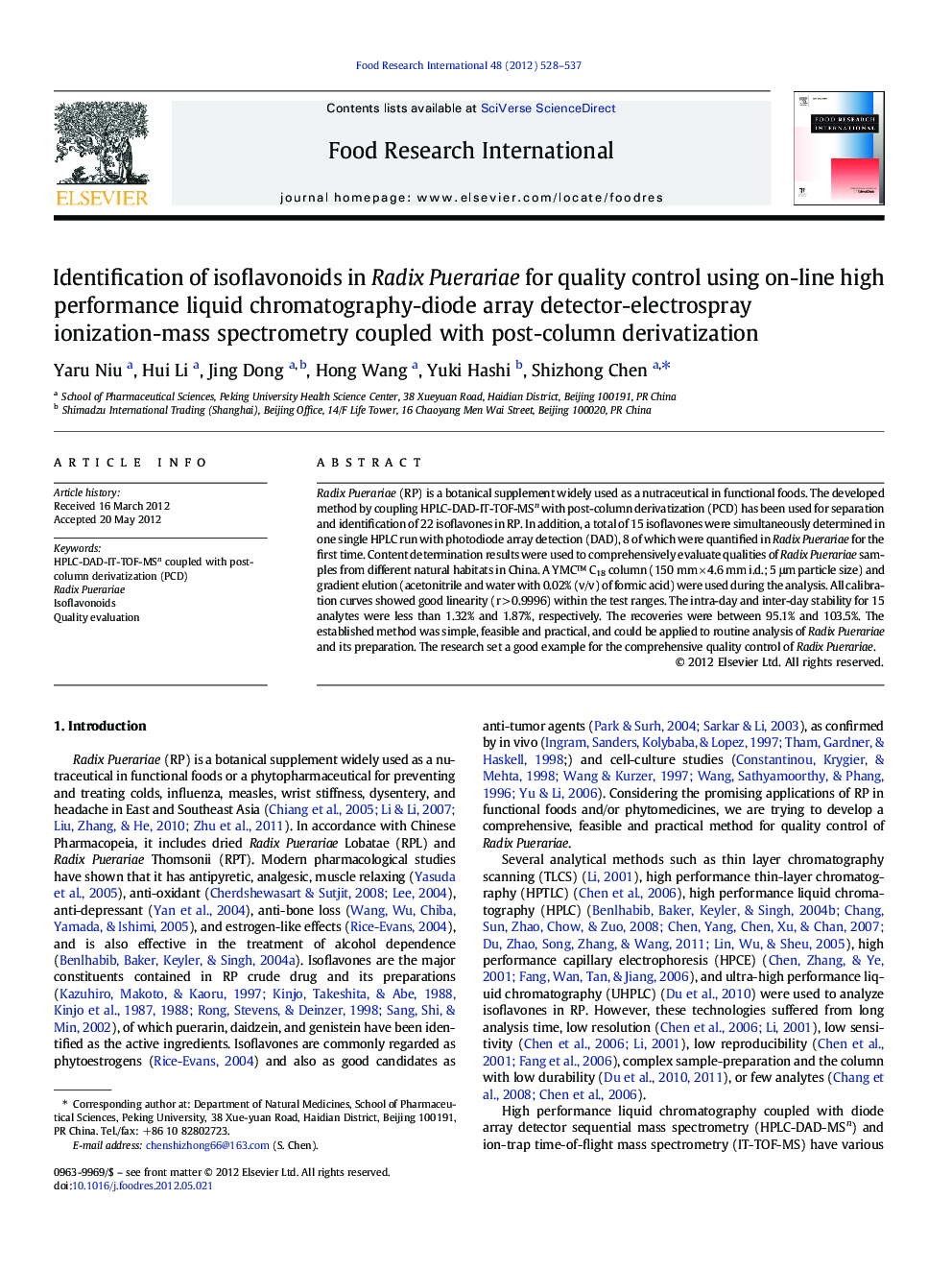| Article ID | Journal | Published Year | Pages | File Type |
|---|---|---|---|---|
| 6398622 | Food Research International | 2012 | 10 Pages |
Radix Puerariae (RP) is a botanical supplement widely used as a nutraceutical in functional foods. The developed method by coupling HPLC-DAD-IT-TOF-MSn with post-column derivatization (PCD) has been used for separation and identification of 22 isoflavones in RP. In addition, a total of 15 isoflavones were simultaneously determined in one single HPLC run with photodiode array detection (DAD), 8 of which were quantified in Radix Puerariae for the first time. Content determination results were used to comprehensively evaluate qualities of Radix Puerariae samples from different natural habitats in China. A YMC⢠C18 column (150 mm Ã 4.6 mm i.d.; 5 μm particle size) and gradient elution (acetonitrile and water with 0.02% (v/v) of formic acid) were used during the analysis. All calibration curves showed good linearity (r > 0.9996) within the test ranges. The intra-day and inter-day stability for 15 analytes were less than 1.32% and 1.87%, respectively. The recoveries were between 95.1% and 103.5%. The established method was simple, feasible and practical, and could be applied to routine analysis of Radix Puerariae and its preparation. The research set a good example for the comprehensive quality control of Radix Puerariae.
⺠LC/MS coupled with post-column derivatization is used for structure identification. ⺠22 isoflavonoids were separated and accurately identified in Radix Puerariae. ⺠15 isoflavonoids were simultaneous determinated for quality control. ⺠8 characteristic isoflavonoids were quantified firstly. ⺠20 samples of Puerariae Radix were clustered analyzed based on content determination.
